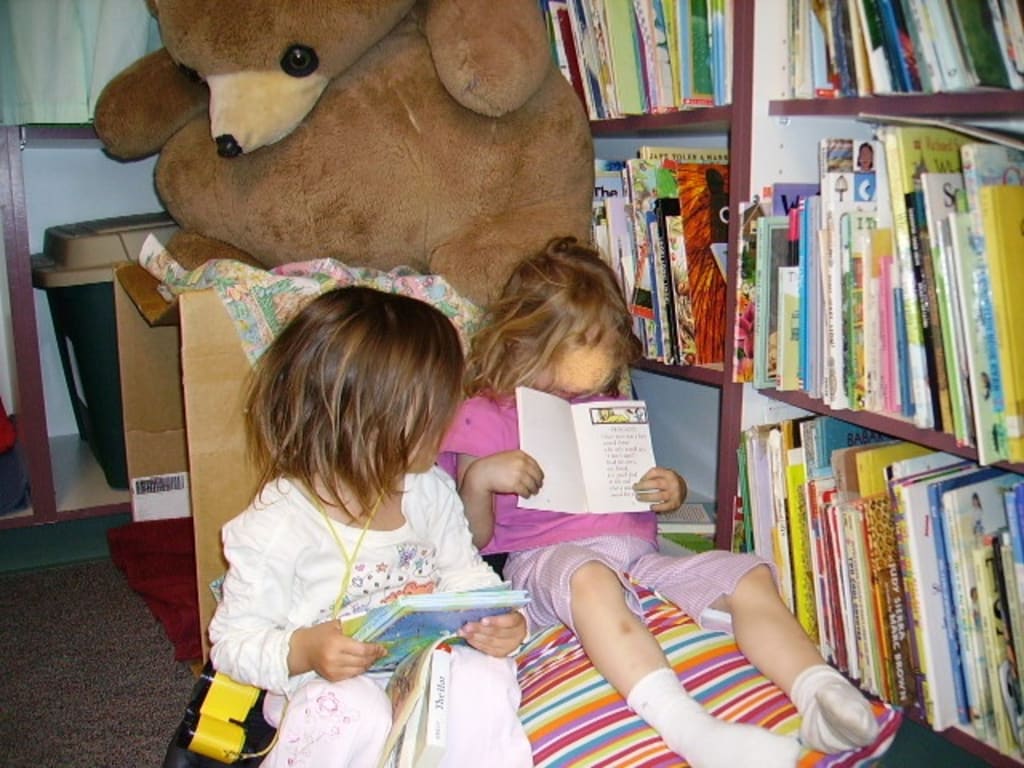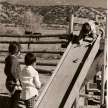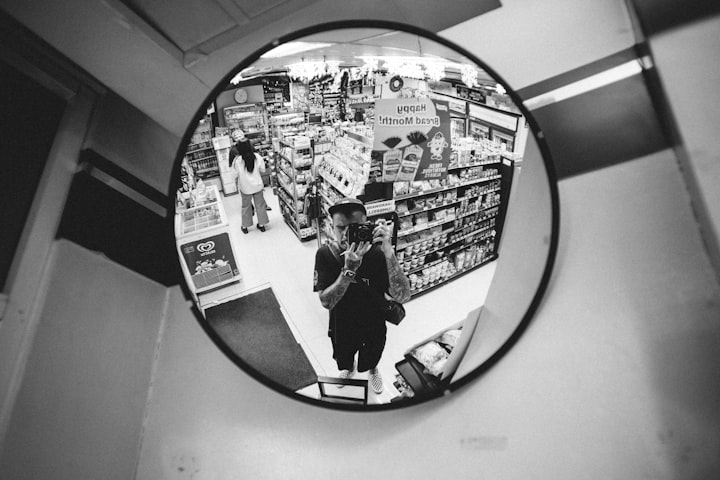Listening to Mother's Heartbeat: A First Step Toward Reading
Language is the Basis for Learning to Read

(A note: I use the male pronoun in this article to allow the narrative to flow more easily. It is not meant as a bias toward or against any other gender.)
Before birth, a child listens to his mother’s heartbeat. This is the beat of life and is the first form of communication. When the birth day finally comes, the child cries to let his mother know how scary this huge change is and is comforted by her touch and her voice. This is the beginning of language and it comprises the first steps to learning to read.
As the days go by, the child learns to cry, laugh and coo to give his parents clues to what he might need. The child watches the faces around him and mimics their expressions. He gradually tries to talk, making sounds that mimic the cadences and lilts of the voices around him. As the first year goes by the child learns to say a few words. He enjoys singing and learns to sing in tune to the music. If he is lucky, he might be in a family that can teach him American Sign Language allowing him to communicate with his little hands before his voice box can form the words he wants.
Slowly, the words come. He understands a lot more words than he can speak and nods his little head wisely during conversations. He can sing before he can talk. The music lifts the words right up and the tune carries the meaning.
As the child continues to grow, more and more words will be said. More and more songs will be sung and communication gradually develops from simply telling his family what he wants to expressing ideas and telling stories.
It is pretty amazing. Most children will go from crying to conversation in less than three years. For the child that is immersed in language going from crying to conversation happens naturally.
Language development, especially the ability to have a meaningful conversation is absolutely necessary before a child can learn to read. Reading and writing are simply abstract extensions of the spoken word. Without adequate conversation, vocabulary and an understanding of stories, a child cannot learn to read and write.
When looked at in this context, it is clear that learning to read begins at birth with the first attempt at communication. It is not separate; it is a continuum. This is why the child who is read to and has daily conversations with adults will have an easier time learning to read.
Some statistics estimate that a child who is read to for ten minutes a day beginning at birth will have heard about a million words before kindergarten. Not necessarily one million separate words, but that many spoken words just by reading. If the family makes a point of also having conversations with the child every day then that number increases exponentially.
Listening and participating in conversation and stories naturally increases a child’s vocabulary. Flash cards are abstract. Oh, a child will learn the words and pictures in order to please the adult, but they won’t have concrete meaning for the child. It will not be internalized. A small child wants to please the adults in his life. He instinctively understands that he is dependent on the adults for everything. He can’t survive on his own. That is why when teaching a child, either as a family member or as a teacher at school, it is very important that we honor the child’s needs because a child will learn what the adult wants him to learn in order to please the adult, sometimes at the expense of what the child needs to learn at that time in his development.
A child will instinctively know what skill they are ready to master next. It is easy to see in the first stages of development, such as when a baby learns to turn over, then crawl, then stand. A child that is ready to learn to walk will pull himself up and fall repeatedly until he can stand up right. Then he will take those first steps over and over, falling each time until he gradually becomes independent. When learning to talk, the child gradually moves from random sounds to sounds that mimic the sounds of speech and then become words. It is a gradual process where the child must build upon each skill sequentially in order to master the next step.
This is true for each stage of development. When ready the child will work to stack the blocks, he will work to hold the pencil, he will ask about the letters and words in the book. If we let the child guide us in our teaching, the skills will develop naturally and will be internalized and understood by the child. He will own his own learning.
A wise teacher once reminded me, “Just because we can make the child learn something, doesn’t mean it is the right time for that learning. We need to pay attention to what the child is truly ready to learn next.”
A child who loves to learn and loves books, stories and music, will start asking about the letters and words in a book. Each child develops at their own pace and in their own time. It's ok if it takes one child a little longer than the other children to catch on.
Some children will teach themselves to read at age four, some won’t read well until age ten. Unless there is a learning disability that needs to be addressed, it is ok. It is ok to give them time. Immerse the child in a world of books, stories, conversation and music and the child will learn to read when his brain is ready.
Remember, it is a lot of learning and growing between birth and reading. It is work to go from crying to writing a story of their own. A lot of brain cells need to grow. The brain has to be fed language in order to master each skill just like the body needs food in order to grow.
Adults need to honor and truly respect what the child needs at each step in their growth. The adults need to provide the environment that allows the child to explore, ask questions, read stories, and create art and music. Adults need to have conversations about experiences with the child to build his vocabulary. Adults need to make reading books and telling stories fun and exciting.
In time the child will develop a rich palette of language and will be able to read and write stories of his own.
The first step to reading is listening to mother’s heartbeat. From there the world opens up into a rich and beautiful learning experience that never ends.
About the Creator
Morgan Alber
I taught preschool and reading for 19 years in a small rural school in Southern Colorado.
I have a B.S. degree in Biology, an AA in Anthropology, and a Master Herbalist Degree.
When I am not playing with my granddaughter, I love to read.






Comments
There are no comments for this story
Be the first to respond and start the conversation.